[Incheon, Zoom In ②] Taste of Incheon, Grace of Incheon
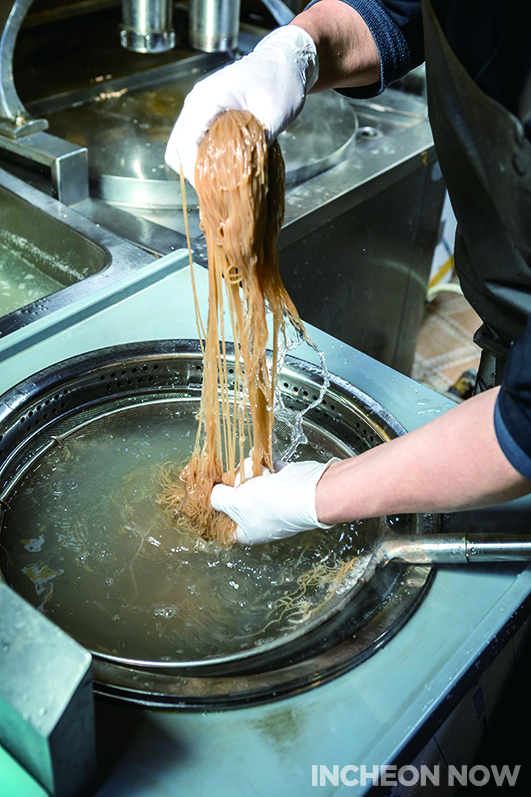
<Naengmyon>
Taste of Incheon
VARIOUS NODDLE DISHES TO ENJOY TO SUIT YOUR PALATE
In the past, noodles were a dish that common people ate to appease their hunger. Many still love the unique noodle dishes that have developed in various ways. The history of noodles, which have become a hearty meal and a delicacy that whets the appetite, begins with Incheon.
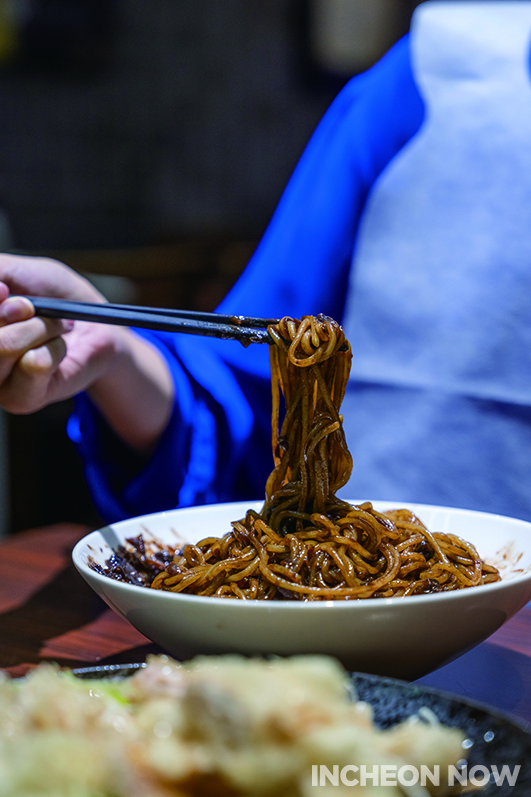
<Jjajangmyeon>
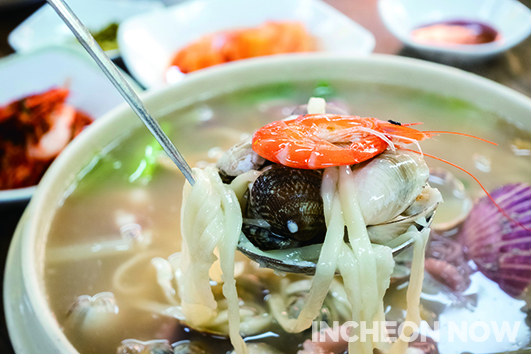
<Kalguksu>
BIRTHPLACE OF MODERN NOODLE DISHES
The history of noodles in Incheon goes back 140 years. Many people gathered in Incheon after the opening of the port in 1883. Foreigners lived in the concessions of each country, and workers came from all over the country to make money. Among them, merchants from Shandong, China, sold a dish of stir-fried meat and soybean paste to workers at the docks of Incheon Port. Later, onions and carrots were added, and the soybean paste was diluted to suit Korean people’s taste, giving birth to jajangmyeon, Korean-style black bean sauce noodles.
People from Pyeongannam-do in North Korea, which had access to Incheon by sea, crossed to the south after the port opening and introduced Pyeongyang-style naengmyeon cold noodles. This unfamiliar food settled in Incheon and transformed into Incheon-style naengmyeon, reflecting the region's flavor. Unlike the North, where they use dongchimi radish water kimchi broth, Incheon added a deep savory flavor by boiling beef or beef bones in a broth. Incheon, where the fishing industry was developed, also had ice factories all over the city for freezing fish, allowing the broth to remain cold even in the summer.
Wheat flour, the key ingredient of noodles, was also produced in Incheon and played a significant role. In 1935, Japan built a flour mill in Bukseong-dong, Jung-gu, to exploit the Korean Peninsula. As time passed and the Korean War left the country in ruins, people needed a facility to process wheat, which accounted for most of UN relief supplies, and they used this facility. Thus, it was named Daehan Flour Mills at the end of 1959, and Korea's first flour mill began its operation, creating various noodle dishes such as jjolmyeon spicy and chewy noodles, naengmyeon cold noodles, and kalguksu knife-cut noodles in Incheon.
Noodles have been around for a long time in Incheon, and many restaurants have maintained their tradition. Enjoy various noodle dishes at Sinseung Banjeom, the first restaurant to sell jjajangmyeon; Sinsinok, which has sold the savory deep-fried dish udong since 1958; and Jemyeonso, which gave birth to jjolmyeon (spicy chewy noodles).
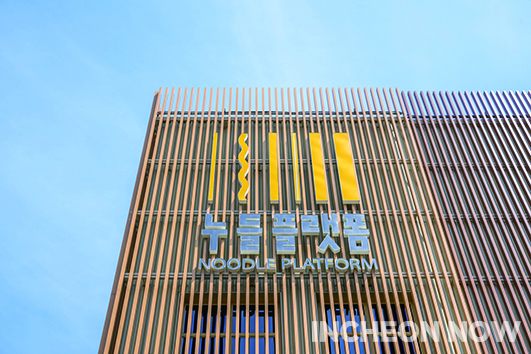
+ NOODLE PLATFORM
This is Korea’s first noodle-themed complex cultural space that introduces, provides experiential programs, and teaches about noodle dishes created and developed in Incheon, such as jajangmyeon and jjolmyeon. The three-story building consists of an exhibition hall introducing various noodles, an experience center that operates cooking classes to teach how to make noodle dishes, and a training center that includes the Open Kitchen for pre-restaurant owners and the Hope Kitchen, where you can learn how to cook noodles.
- Address: 36 Sinpo-ro 27beon-gil, Jung-gu, Incheon
- Hours: Tuesday-Sunday, 9:00-18:00 (Closed on Mondays)
- Main Facilities: Little Noodle Theater, Noodle Plaza, Interesting Noodle Stories, Cooking Class, etc.
- Information: 032-766-3770
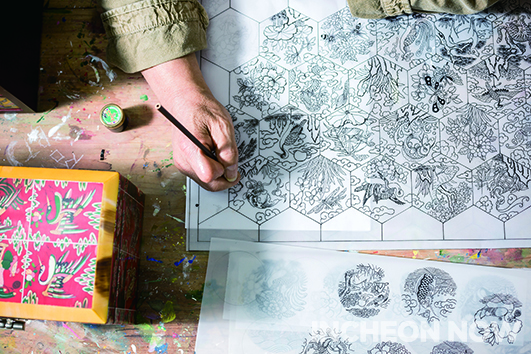
Grace of Incheon
BEAUTY IN EMBRACING AND CREATING THE SPIRIT OF THE PAST
Autumn is a time to fall in love with beauty. The beauty of nature in various colors is excellent, but how about taking some time to deeply explore art? In particular, intangible cultural heritages passed down from person to person for generations will provide a memorable experience. Here are Incheon’s intangible cultural heritages that preserve the beauty of tradition and spread its value from Incheon.
After thinning the horn, traditional Korean patterns are designed and colored using mineral pigments. The engraving craft, which will not change color for a thousand years, is completed using only the senses of the fingers and palms.
ens and hundreds of carving knives shape the solid wood into a Buddha image. The Buddha’s gentle smile becomes more apparent every time he touches it.
Thin strands of sedge are tightly woven. Sedge handcrafts are highly practical and great for everyday use. Adding beauty to them is the craftsman’s work.
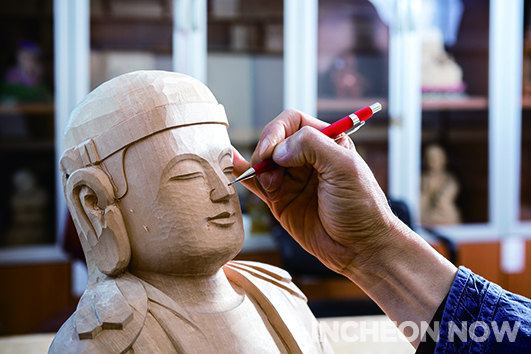
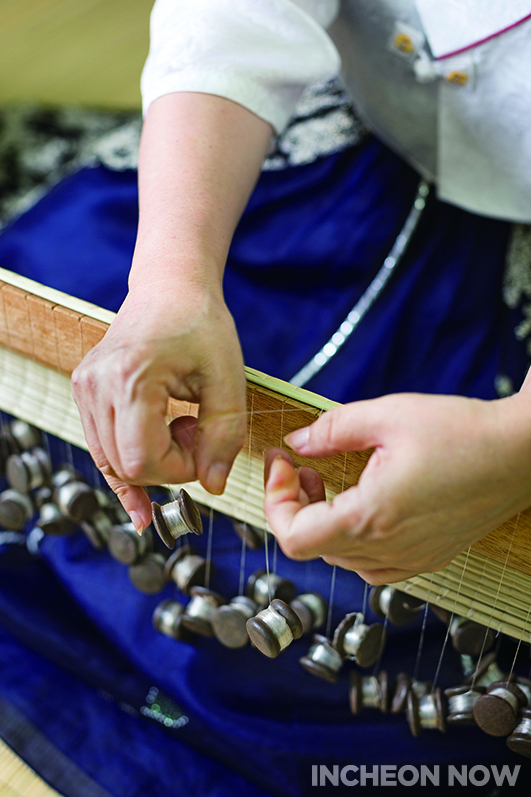
INTANGIBLE CULTURAL HERITAGE HARBORING THE SOUL OF KOREA
Some elements of traditional culture, accumulated over a long history, are not visible but intangible. They are heritages that were created through gestures, body language, and voices, such as performances, plays, music, crafts, and folk games. They are passed down from person to person and constantly re-created in our lives. Those who pass on these intangible traditional heritages are called holders, successor trainers, and certified trainees, and they are collectively called successors. The works created by these successors embody the intangible spirit. Successors who pass on intangible heritages are generally divided into arts successors and skill successors. Arts successors engage in artistic activities that embody national identity through sounds and movements, such as music, dance, plays, games, rituals, and martial arts. Skill successors, on the other hand, are involved in crafts and fine arts. Both create works using traditional methods. Incheon's arts successors and skill successors are working hard to keep the tradition alive at the Incheon Intangible Cultural Asset Learning Education Center.
The '2024 Incheon Intangible Heritage Festival' was held on September 18. It is a festival where you can enjoy Incheon's excellent intangible heritage in one place, and it was planned to let citizens experience traditional culture rooted in Incheon more closely. In 2022 and 2023, it was held at the Incheon Intangible Cultural Asset Learning Education Center, but this year, it was held at the Wolmido Seagull Performance Hall, a broader and more open space. The performances started with Bupyeong Dure Nori and Kkotmaji Gut and were decorated with beautiful stages by arts successors such as Samhyeon Yukgak and Hwimori Japga. In addition, beautiful works by skill successors such as Gungsijang Master of Bow and Arrow Making, Dansojang Master of Short Bamboo Flute Making, Daegeumjang Master of Long Bamboo Flute Making, and Wanchojang Master of Sedge Weaving were exhibited, capturing the attention of visitors.
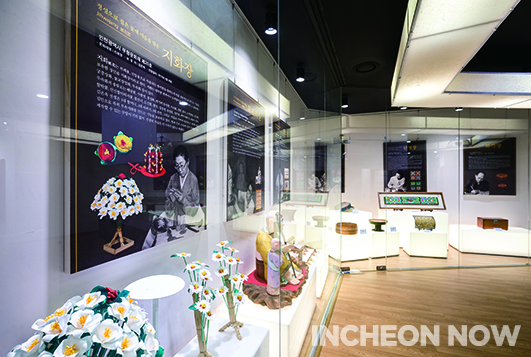
+ INCHEON INTANGIBLE CULTURAL ASSET LEARNING EDUCATION CENTER
IThe Incheon Intangible Cultural Asset Learning Education Center is an institution that supports the preservation and systematic succession of intangible cultural heritage designated by the national and Incheon governments. It operates a program in the first and second half of each year to learn traditional culture directly from intangible cultural heritage successors. In addition, it provides various programs, including performances, events, and exhibitions, for people to experience and enjoy intangible cultural heritage.
- Address: 599 Maesohol-ro, Michuhol-gu, Incheon
- Hours: Tuesday-Sunday 9:00-18:00 (Closed on Mondays)
- Main Facilities: B1 (Special Exhibition Hall, Permanent Exhibition Hall), 1F (PR
Hall), Outdoor Performance Hall, Traditional Culture Experience Hall, etc.
- Website: www.incheon.go.kr/culture/CU030101
- Inquiries: 032-440-8080
 Automatic Translation
Initialize
Automatic Translation
Initialize